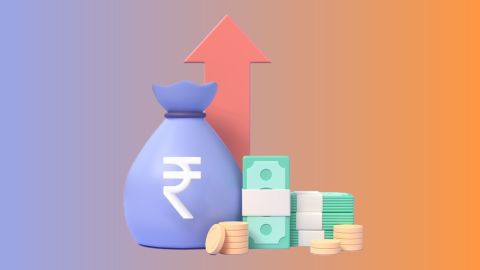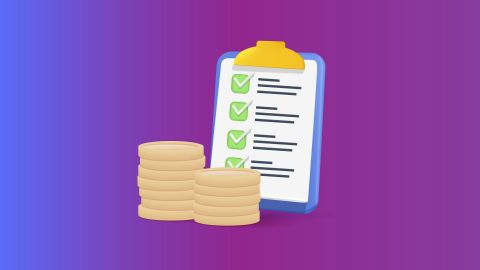Example of reverse charge mechanism under GST
Suppose a GST-registered dealer buys goods worth INR 10,000 from an unregistered supplier. In this case, the dealer has to raise a self-invoice and pay INR 1,200 as GST (calculated at 12% of INR 10,000) under the reverse charge mechanism. For intra-state purchases, this INR 1,200 is split as INR 600 CGST and INR 600 SGST. For inter-state purchases, the dealer pays INR 1,200 as IGST.
Since RCM can be complex, with various conditions depending on the nature of supply, it is advisable to consult a professional if you are uncertain about its applicability in your case.
Reverse charge mechanism under GST
Under the GST regime, the government introduced Reverse Charge Mechanism in GST to bring in transparency and accountability into the tax system. The RCM under GST applies to both goods and services, and it impacts both registered and unregistered businesses.
In simple terms, RCM under GST requires the buyer of goods or services to pay the tax instead of the supplier. This includes situations where the supplier is an unregistered dealer, or where the value of the goods or services exceeds a specific threshold.
Current scenario of Reverse Charge Mechanism (RCM) in GST
The introduction of RCM has enabled more stringent compliance measures, creating a more accountable tax-paying environment.
The implementation of GST has broadened the scope and implications of RCM. Under GST, RCM isn't restricted merely to services but could potentially encompass goods as well, thereby enlarging its sphere of influence on tax administration.
These changes represent a strategic move towards a more organised, compliant, and expansive tax environment in India, strengthening the country's fiscal infrastructure. Nonetheless, the implementation process of RCM has not been without challenges, thereby warranting ongoing evaluations and potential refinements to maximise its efficacy.
RCM provisions under GSTR forms – GSTR 1 – GSTR 2
RCM provisions under GSTR Forms, like GSTR 1 and GSTR 2, are essential for tax reporting. If a supplier sells goods or services under RCM, they can't claim input tax credit, as the receiver pays the taxes directly. Importers also pay taxes under RCM, along with import duties. GSTR 1 records inward supplies, while GSTR 2 details these supplies further. Those liable under RCM must register for GST, regardless of turnover. Suppliers can claim input tax credit for RCM payments, but it must be used for business purposes. Services under RCM include Goods Transport Agency, Recovery Agent, and others.
When is reverse charge applicable?
Under GST, reverse charge shifts the liability to pay tax from the supplier to the recipient of goods or services. Below are the main situations where reverse charge applies:
Situation
|
Explanation
|
Supply from unregistered or registered dealers
|
When a GST-registered buyer purchases goods from an unregistered seller, the buyer must pay GST directly to the government. In such cases, the registered buyer must self-invoice the purchase. For intra-state purchases, CGST and SGST are payable, while for inter-state purchases, IGST is applicable.
|
Services through e-commerce operators
|
If services are provided through an e-commerce operator, the operator is responsible for paying GST under reverse charge. For example, platforms like UrbanClap (now Urban Company) that provide services of plumbers, electricians, or beauticians must pay GST and recover it from consumers. If the operator does not have a physical presence, an appointed representative must discharge this liability.
|
CBEC-specified goods and services
|
The Central Board of Indirect Taxes and Customs (CBIC) notifies certain goods and services where reverse charge is mandatory. In such cases, the recipient of goods or services pays GST instead of the supplier. The registered buyer must issue a payment voucher and comply with the provisions under Section 2(94) and 2(98) of the CGST Act, 2017.
|
Time of supply under RCM in GST
The Time of Supply under Reverse Charge Mechanism (RCM) is a crucial concept in GST, determining the specific point when the tax liability arises for the recipient of goods or services. This mechanism ensures that tax is collected from the end-consumer, particularly in cases where the supplier is not registered or is outside the tax net. Understanding the time of supply under RCM is essential for accurate tax reporting and compliance.
Registration rules under RCM
As per Section 24 of the CGST Act 2017, it's mandatory for someone paying tax through the Reverse Charge Mechanism (RCM) to register, irrespective of the turnover amount, even if it is below the threshold limit. This rule applies when an unregistered supplier sells goods or services to a registered recipient. The tax liability shifts to the registered person who must account for tax on taxable supplies, while exempted supplies don't fall under reverse charge. The goal is to combat tax evasion, particularly from unregistered dealers, and increase overall tax compliance. Recipients can claim input tax credit for the tax paid under reverse charge. The annual GST registration threshold is 20 lakh, reduced to 10 lakh for Hill states and Northeastern States. Additionally, in some circumstances, states have the mandate to set the threshold limit as high as 40 lakh.
Who should pay GST under RCM?
Under the Reverse Charge Mechanism (RCM), the responsibility of GST payment falls on the recipient of goods or services rather than the supplier. Suppliers are, however, required to indicate whether RCM tax is due on the invoice.
- Input Tax Credit (ITC): Recipients of goods or services can claim ITC on RCM amounts to further their business operations.
- Composition dealers: Must pay GST at normal rates under RCM without claiming ITC.
- GST compensation cess: RCM tax payables may be subject to this additional tax.
- E-commerce services: For services provided via e-commerce, the recipient must pay tax. If the assessee lacks physical presence in the taxable area, a representative becomes liable for GST.
- Compulsory registration: Pursuant to Section 24 of the CGST Act 2017, those with a turnover below the threshold limit must register if they pay tax under RCM, promoting tax compliance and robust GST implementation.
Input Tax Credit (ITC) under RCM
Input Tax Credit (ITC) under the Reverse Charge Mechanism (RCM) allows the recipient of goods or services to claim credit for the GST paid under RCM. This ITC can be used to offset future tax liabilities, thereby reducing the overall tax burden. However, ITC on RCM amounts can only be claimed if the goods or services are used for business purposes. It is important to ensure proper documentation and timely payment of RCM taxes to claim ITC effectively. Additionally, ITC on RCM cannot be claimed by composition dealers as they are not eligible for ITC under the GST regime.
Types of reverse charges under GST
There are two types of reverse charges under GST - forward and backward. The forward charge applies to goods or services purchased from an unregistered dealer. In this scenario, the buyer has to pay the tax, and the supplier is not involved in the process. On the other hand, the backward charge applies to specific services, which includes legal services, manpower supply services, and security services, among others.
Implications of reverse charge mechanism on businesses
The RCM under GST has various implications on businesses, both positive and negative. Let us look at some of the implications:
- Compliance burden: As the responsibility to pay the tax lies with the buyer, businesses need to be diligent in ensuring that they comply with the regulations of RCM. This includes proper record-keeping, accounting, and timely payment of the tax.
- Working capital: One of the significant negative implications of RCM is that it impacts the working capital of the business. Often, buyers have to pay the tax upfront, affecting their cash flow.
- Cost savings: On the brighter side, RCM can lead to cost savings for businesses. If the buyer is purchasing goods or services from an unregistered dealer, they can save on the tax liability compared to purchasing from a registered dealer.
- Compliance with tax laws: The introduction of RCM has increased the compliance of businesses with tax laws. This has contributed to the government's objective of creating a transparent and accountable tax system.
Goods supplied under the reverse charge mechanism (RCM)
S.No.
|
Description of Goods
|
Supplier
|
Recipient
|
1
|
Bidi leaves (wrapper)
|
Agriculturist
|
Any registered person
|
2
|
Cashew nuts (not shelled or peeled)
|
Agriculturist
|
Any registered person
|
3
|
Tobacco leaves
|
Agriculturist
|
Any registered person
|
4
|
Lottery supply
|
State Government, Union Territory, or local authority
|
Lottery distributor or selling agent
|
5
|
Silk yarn
|
Manufacturer of silk yarn
|
Any registered person
|
6
|
Priority sector lending certificate
|
Any registered person
|
Any registered person
|
7
|
Raw cotton
|
Agriculturist
|
Any registered person
|
8
|
Used vehicles, seized or confiscated goods
|
Central Government, State Government, Union Territory, or local authority
|
Any registered person
|
Reverse charge mechanism (RCM) GST list for services
S.No.
|
Service Provider
|
Service Recipient
|
1
|
Director of a company or body corporate
|
The company or body corporate
|
2
|
Recovery agent
|
Banking company, NBFC, or financial institution
|
3
|
Goods transport agency (GTA)
|
Casual taxable person, body corporate, partnership firm, society, factory, or any person registered under CGST, SGST, or IGST Act
|
4
|
Insurance agent
|
Persons engaged in the insurance business
|
5
|
Individual advocate or firm of advocates
|
Any business entity
|
Empower your business with Bajaj Finserv Business Loan
While navigating the complexities of the reverse charge mechanism in GST is crucial for business success, access to adequate financing is equally essential for fuelling growth and expansion. With Bajaj Finserv Business Loan, businesses can access tailored financing solutions designed to meet their unique needs.
Here are some of the advantages of opting for our business loan:
- Working capital: Our business loan can provide the much-needed working capital that businesses require to grow and expand their operations.
- Cash flow management: It can help businesses manage their cash flows better and enable them to pay their liabilities on time, avoiding unnecessary penalties.
- Investment in equipment: Our business loan can help businesses invest in new equipment that can increase productivity and efficiency.
- Expansion: It can help businesses expand their operations by investing in new markets, products, and services.
Whether you are looking to invest in technology upgrades, expand your operations, or optimise working capital, Bajaj Finserv Business Loan offers the financial support you need to thrive in today's competitive market. Take the first step towards financial empowerment and apply for Bajaj Finserv Business Loan today.






